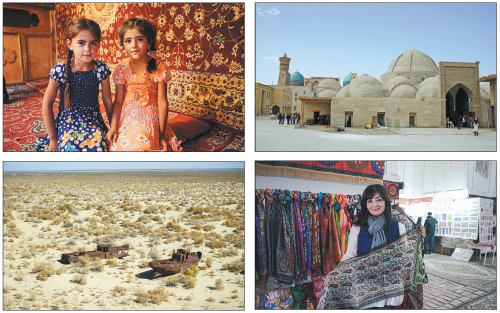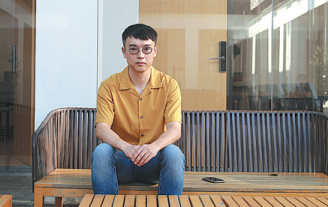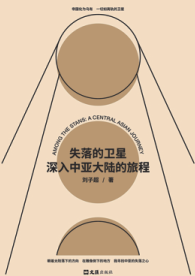A man of the world
Traveler and author gives the reader a taste of exotic adventure, Yang Yang reports.
The author knows a thing or two about traveling, real traveling. Not in the pressurized cabin of an aircraft but by blister-inducing foot slog. However, when picking up Among the Stans: A Central Asian Journey, the reader does not feel any discomfort. Far from it. The latest work by Chinese writer Liu Zichao, published in 2020, has concise and vivid language, and a sense of humor that makes the reading a pleasant journey.
Liu's humor is based on keen observation and perception as he travels through strange lands in Central Asia, where few Chinese travelers have been.
"I want to record the world from the perspective of a Chinese writer," says Liu, 36, sitting at a Beijing eatery. A pair of oval-shaped glasses gives him an intellectual appearance. He exudes fitness as befits a person who runs daily. Traveling can take a toll and the fitter you are the more chance you have of completing the journey.
"Traveling is quite physically demanding," he says, adding that it is also full of risk.
Once he spent six hours walking in the Tianshan Mountains in Kyrgyzstan, 3,000 meters above sea level, looking for an alpine lake but his quest was in vain.
After being involved in a motorbike accident in India in the spring of 2011, his left ankle was badly injured. The bone, while not broken, was nonetheless badly exposed.
After applying rudimentary medicine and putting on a bandage, he continued traveling.
He had to disinfect the wound every morning before setting off and every evening after reaching a destination. But the wound was not healing. Forty days later, on his return to China, he heard a doctor comment that if he had come any later, he would have lost the foot.
Accidents and disease are among the risks that a traveler has to face when exploring the world, sometimes the danger being the capriciousness of nature or even robbers, both of which Liu has experienced.
However, adventures are rewarding. Liu's latest book is one of the three based on his travels in the last decade in Central Europe, Southeast Asia, South Asia, and Central Asia. The other two are Arrive Before Midnight: A Central European Odyssey published in 2015 and Chasing the Monsoon: Dispatches from India and Southeast Asia published in 2019.
A big change for him, personally, after all these travel adventures, he says, is that the awareness of "knowing there are people living diversified lifestyles" made him more relaxed living in a comparatively competitive society after he returned home.
Liu's essays are a combination of his observations of nature, history, society and people. With a writing style that has matured over the last decade, Among the Stans has become the most popular of his three travelogues, with more than 40,000 copies sold so far, and his name often being seen on the numerous year-end reading lists for 2020.
Luo Xin, a professor of history at Peking University, says that when he first read Among the Stans, he was surprised to find it was by a Chinese writer, calling it the first high-quality original Chinese travel writing work, which "set a benchmark for the Chinese travel writers to come".
The starting point
Born and raised in Beijing, Liu always aspired to become a writer. He attended top schools and his early life was uneventful.
"Limited life experience provides little writing material for fiction. I only published one story," Liu says.
As a result, after graduating from Peking University, Liu chose to become a journalist at a reputed weekly publication in China as a starting point for his writing career, which saw him work for a number of other media outlets in the following years.
"Working in the media helped to build up my capability to ask questions during my journeys," he says.
In the summer of 2010, he went on a business trip to Horgos in the Xinjiang Uygur autonomous region, a border city neighboring Kazakhstan. At the border he saw trucks waiting in long lines to pass and the majestic snowcapped Tianshan Mountains looming in the distance. He had an impulse to see the world beyond the borderline.
In 2011, he made his first trip to Central Asia. His destination was Uzbekistan. After returning, Liu started learning Russian and Uzbek to better understand the countries there. However, he did not get the chance to return until 2018.
Compared with the previous books about his trips to Central Europe and Southeast Asia and South Asia, in Among the Stans, he largely cut down content about history, but increased his observation on local life, especially his interactions with local people.
"Instead of personal feelings, this time I explored those countries consciously with questions that I hoped I could answer when the trips ended," he says.
"I wanted to foretell the future of those countries based on my understanding of their history, culture and society, especially after communicating with young people," he says.
Before and during his travel, Liu does a lot of research about the destination. What matters more is that he uses his journalistic instinct to look for interesting people "whose stories can reflect important perspectives of the country".
"I would talk to them and quickly be able to tell whether they were what I was looking for," he says.
As well as encountering people randomly while on the road, he would often search local social media platforms, including local dating apps.
"In these conservative Central Asian countries it is interesting to observe how young people decorate themselves, what clothes they wear and the backdrops they choose for their photos. These things provide a lot of information," he says.
"For instance, what defines their perception of beauty? Where did they take the photos? In a traditional teahouse or in a Western-style restaurant? I would find that, in those conservative societies, young people are rather open," he says.
"By viewing enough photos online, I would be able to form a basic judgment of young people in that place and a basic prediction of the country's future in five to 10 years," he adds.
In our time
In Bishkek, the capital of Kyrgyzstan, he met a young woman named Zoey, who ran a restaurant. Zoey told Liu that she did not have a sense of belonging, although she had lived in many different places, including the United States, Saudi Arabia, as well as her mother country, Kyrgyzstan.
Liu told her that he had the same feeling, describing himself as a modern nomad, moving around all the time from one place to another, belonging to nowhere.
"For modern nomads, traveling is not to reach any destination, but for the sake of travel itself. The most important thing is to keep moving," he writes.
In Central Asia, he traveled across the depopulated zone of Pamir in Tajikistan, visited a nuclear test site of the former Soviet Union in Kazakhstan, and strolled through Samarqand, Uzbekistan's second largest city, to see the ancient buildings that carry the former brilliance of the Islamic empire.
At a bar in Uzbekistan, he saw a drunk businessman tossing cash into the air while shouting:"What you saw was fake, and this is reality." In 2019, Liu's essay about his travels in Uzbekistan was shortlisted for a True Story Award, an award founded by Reportagen, a magazine in Switzerland, to choose the best nonfiction writing among competitors from 29 countries and regions.
He also saw the influence of China's development on its neighbors. For instance, in Tajikistan, he met a young man called Xing Yun (in Chinese literally meaning "lucky") who was studying Chinese and keen to talk to Chinese people to practice his Mandarin.
Travel writing is a long-established genre in the West, but still quite new for Chinese readers. The best of its kind are those full of people's stories, Luo says, and Liu's travel writing follows this tradition to record the stories of real people.
Since the reform and opening-up, China attached great importance to studying English and other foreign languages. Writers of Liu's generation, with a firm grasp of English, or other foreign language skills, started traveling the world.
"You would find that there was little writing about individual travel around the world from the perspective of Chinese people, despite the fact that there is a lot of such writing in English or other languages," Liu says."So it needs us to fill in the blanks, to explain our understanding of the world in the Chinese language, which is what I think I can do. It's like it is my mission."
One of his favorite writers is Ernest Hemingway, because "writers in our time share a lot in common with writers of his time". Liu explains:"He wrote about adventures in Europe or Africa, about his life in Paris, fishing in France, hunting in Africa, or the Spanish Civil War. His experience represents the American spirit of his time."
"It's my feeling that China has reached a period similar to that of the United States during Hemingway's life," Liu says."Hemingway used his American experience to explore Europe. Similarly, we are now using our Chinese experience to explore the world."
Contact the writer at yangyangs@chinadaily.com.cn


















